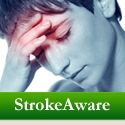After a stroke, millions of brain neurons die within minutes. While the dead cells can’t be restored, some tissue around the dead area remains alive but non-functioning. Research has found that stem cells target the area with chemicals that save and rejuvenate that tissue. The optimal time for introducing stem cells seems to be between 36 and 72 hours after the stroke. Although the study involved a small number of patients, results were promising enough to plan on a larger study.
Tests
Computed Tomography Scan (CT or CAT scan)
This procedure uses a combination of X-rays and computer technology to produce cross-sectional images of the body both horizontally and vertically, to detect abnormalities and help identify the location or type of stroke.
Magnetic Resonance Imaging (MRI)
MRI uses magnetic fields to detect small changes in brain tissue that help to locate and diagnose stroke.
Radionuclide Angiography
This nuclear brain scan uses radioactive compounds injected into a vein in the arm, and a machine (similar to a Geiger counter) to create a map showing their uptake into different parts of the head, often detecting areas of decreased blood flow and tissue damage.
Computed Tomographic Angiography (CTA)
This special type of CT scan can look at specific blood vessels within the body.
Magnetic Resonance Angiography (MRA)
Using MRI technology, this procedure evaluates blood flow through arteries in a noninvasive way.
Functional Magnetic Resonance Imaging (fMRI)
This variation of MRI is used to determine the specific location of the brain where a certain function, such as speech or memory, occurs.
Electroencephalogram (EEG)
This procedure records the brain's continuous, electrical activity by means of electrodes attached to the scalp.
Evoked Potentials
This test records the brain's electrical response to visual, auditory, and sensory stimuli.
Carotid Phonoangiography
A small microphone is placed over the carotid artery on the neck to record sounds created by blood flow as it passes through a partially blocked artery.
Doppler Sonography
A special transducer is used to direct sound waves into a blood vessel to evaluate the sound of blood moving though the vessel, looking for faintness or absence of sound.
Ocular Plethysmography
This test measures pressure on the eyes, or detects pulses in the eyes.
Cerebral Blood Flow Test (Inhalation Method)
This test measures the amount of oxygen in the blood supply that reaches different areas of the brain.
Digital Subtraction Angiography (DSA)
The test involves inserting a small, thin tube (catheter) into an artery in the leg and passing it up to the blood vessels in the brain. A contrast dye is injected through the catheter and X-ray images are taken.
Treatments
Mechanical Thrombectomy
The use of anti-clotting drugs in combination with a catheter-based system for clearing the blockage that UHealth doctors helped pioneer has enabled seven out of 10 people to walk out of the hospital if they were treated within six hours of a stroke. After the clot buster is administered, specialists can thread a catheter through blood vessels to the site of the blockage and manually remove the clot. Mechanical thrombectomy has become the standard of care.
Stem Cell Therapy
While stem cells are still being used in clinical trials, there is evidence that, combined with clot busting and mechanical thrombectomy, therapy enhances recovery. Stem cells injected into distant arteries or veins travel to the site of a stroke in the brain to fuel the repair process. The optimal time for introducing stem cells seems to be between 36 and 72 hours after the stroke.
Why Choose UHealth?
One of the largest stroke programs in the country. We have the experience you need. Our researchers were the first to show that stem cells launched into distant arteries or veins rush to the site of a stroke in the brain to enhance the repair process, magnifying what the body is already doing to fix itself.
StrokeAware: Get Informed About Strokes

Stroke is the third leading cause of death in the U.S. and the leading cause of serious, long-term, adult disability. Each year, over 700,000 people have a stroke; 75% of these are first attacks. Knowing the warning signs and acting quickly are our best defenses against Stroke.
Questions? We're here to help.
Our appointment specialists are ready to help you find what you need. Contact us today.